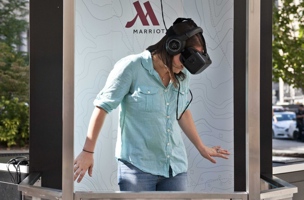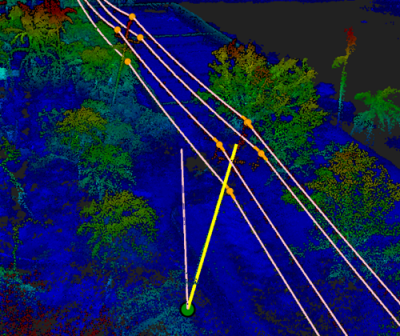A business opportunity for 3D-imaging
Over the past few months, virtual reality has reached critical mass. First, Business Insider estimated that the VR hardware market would grow exponentially over the next few years–from $37 million in 2015 to $2.8 billion in 2020.
Next, Wired Magazine proclaimed, “E3 finally proved that consumer VR will work.” The show, they wrote, did this by demonstrating that Oculus Rift had reached maturity and that people are finally willing to buy the technology.
Later, Apple got in on the game, practically ensuring that the technology goes mainstream. The Motley Fool reports that company has filed patents for a VR headset designed to use the iPhone as a processing unit. If you thought the Apple watch was a way to keep people stuck to their iPhone ecosystems, wait until you see this thing.
As if that weren’t enough, Google’s favorite content-delivery platform YouTube is being upgraded to simplify the process of creating and sharing virtual reality content.
Take all this news alongside the media frenzy around Microsoft’s HoloLens, and the fact that the NFL is starting to use VR in their training camps, you understand that there is a growing demand for virtual reality hardware. Hardware that displays high-resolution 3D content–content that people will want more of.
Oculus Rift’s VR film “Henry”
Some of this content will be created from scratch, like Oculus Rift’s first original virtual reality movie Henry. But some of this content will have to be captured from the real world. Marriott Hotels, for instance, is starting to use VR to give people tours of far-away destinations. Doesn’t this sound like another opportunity for the 3D imaging industry? It looks like they’re using video cameras right now to create simple stereoscopic video–wouldn’t a 3D scan be better?
Travis Reinke from SCANable saw some similar opportunities a few years ago, and used it to expand his scanning business into into Hollywood, to work on films like American Sniper and TV shows like Marvel’s Daredevil. (Other examples: Jonathan Coco recently used his 3D know-how to help scan for a charity bra, and Michael Raphael took his equipment to scan some models for a feature in Vogue.)
As Reinke explained to me in an interview a few months back, 3D-imaging professionals “have the tools and knowledge to quickly and accurately capture an exact digital replica of just about anything.” These tools and skilles will likely be in high demand as VR continues to catch on.
You might already own 3D technology that can capture people, objects, and environments with a high degree of detail and realism. Why couldn’t you use that to help create virtual worlds, too?
As Reinke noted during our interview, “The possibilities are endless. It is just a matter of telling the world what you can do, building relationships with key decision-makers and working your tail off to provide outstanding results.”
SCANable did the 3D imaging for this, too.






